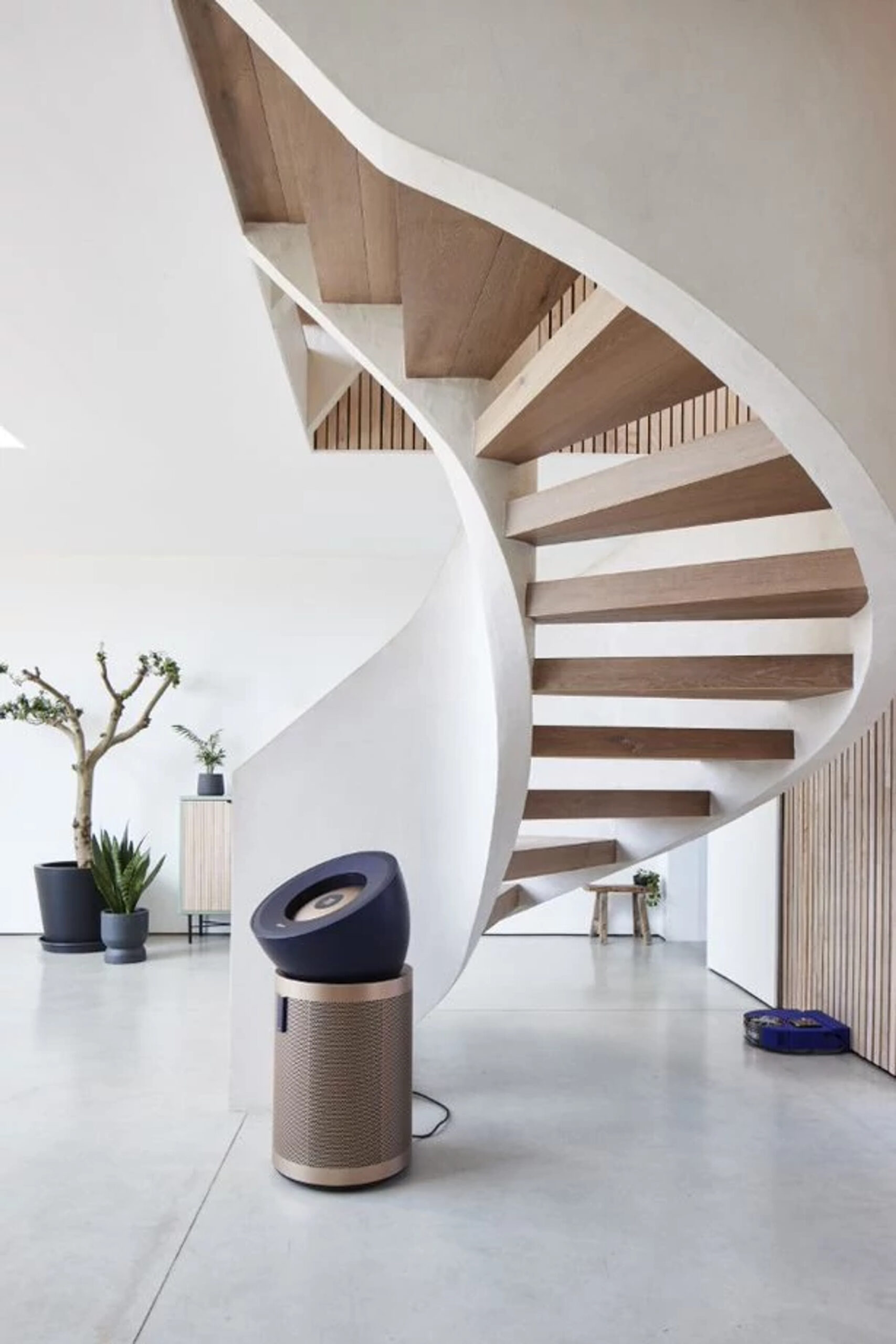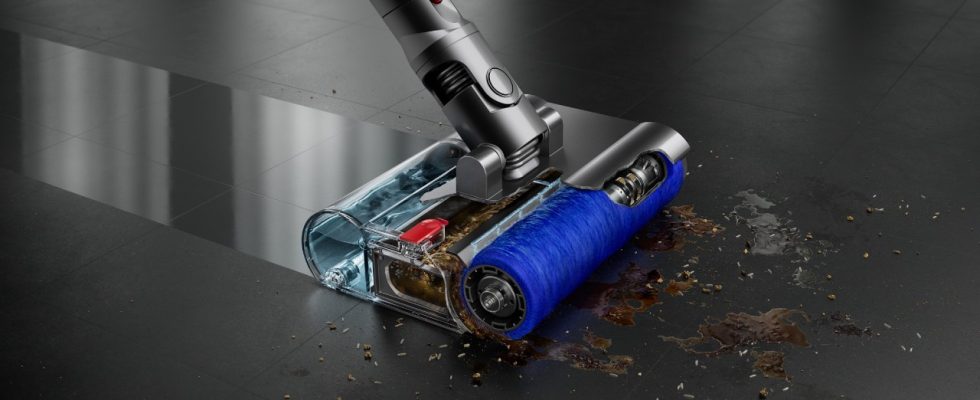Dyson; today globally announced six new technologies that combine automation, advanced software and artificial intelligence with the best cleaning performance ever. Technologies unveiled by John Churchill, Chief Technology Officer at Dyson’s global headquarters at St James Power Station in Singapore, demonstrate Dyson’s vision for the future of cleaner homes, with decades of expertise in filtration, airflow, motors, software and robotics. .
Powerful and innovative technological breakthrough from Dyson
Dyson’s Chief Technology Officer John Churchill “Robotics, sensing, intelligence, these are all areas typically considered ‘future technology’, but at Dyson they have long been a part of product development. Our engineers have used and continue to use these technologies to reduce the cognitive load on our users and save time, energy and effort in maintaining a healthy home.
Our vision for the future is homes that can take care of themselves. The most powerful robot vacuum launched today, new cordless vacuums and cleaning head technologies for smart, large-space air cleaning and active cleaning, offering adaptive, multifunctional cleaning where and when you need it, are the embodiment of that.” said.
There has been a significant reduction in the number of regular cleaners over the past year, but we still spend an average of 25 minutes a week vacuuming our homes globally, or the equivalent of 65 hours a year. These new technologies are based on sensing, software and automation. Whether it’s a vacuum cleaner or an air purifier, a product can understand its environment and its task and automatically react to meet challenges in the most effective way.
This reaction starts with smart and sensitive sensors. It relies heavily on embedded software, electronics, and automation, as well as fundamental mechanical technologies such as motors, filtering, and collection to properly perform its task.
Improved sensors and software increase performance, providing a different and more efficient cleaning method.
Dyson 360 Vis Nav with sensors that detect the edges of a room The robot vacuum solves one of the biggest challenges for any robot vacuum by directing the suction power to the edges via a stimulator for precise edge cleaning. The high-end processor can determine its position up to 71mm, calculate and adapt.
Dyson’s cordless vacuum technology uses acoustic piezo sensors to count and classify dust particles, and notify users via the LCD screen when to continue cleaning. These measurements also determine the suction power required for the task and automatically adjust the power levels.

The Dyson Purifier Big+Quiet Formaldehyde has integrated sensors… A unique Dyson algorithm cross-checks the data every second, analyzing the air in the room, automatically turning on purge when pollutant levels rise and turning it off when the area is completely cleared. The unique solid state sensor precisely detects formaldehyde without mixing by other VOCs (Volatile Organic Compounds).
The software embedded in Dyson machines helps reduce user frustration. Sensors in the Dyson Gen5detect cordless vacuum monitor the speed, power and temperature of the motor. Alongside a redesigned user interface, it allows users to independently maintain their machines, helping them identify and fix potential problems. Remote software updates allow machines to be automatically upgraded to the latest features and improvements.
Dyson has been developing its own engine technology since 2004, investing more than £350 million in research, laboratories, expert teams and production capacities to date.
Dyson’s fifth-generation Hyperdymium™ engine is smaller, faster and more powerful than its predecessors… Spinning at 135,000 revolutions per minute, the next-generation Hyperdymium engine is nine times faster than a Formula 1 engine, powering the Dyson Gen5detect cordless vacuum with 262 air for high-quality cleaning performance. It provides a powerful suction power of watts.
For 30 years, Dyson products have been at the heart of separating or filtering particles from the air stream. During this time, Dyson has invested in laboratories and test equipment that measure filtration efficiency not only of the filter as required by industry standards, but also at the entire machine level, developing entirely new test methods for both floor care and air cleaning.
Dyson vacuums offer five stages of fully enclosed filtration, from the cyclonic separation in the chamber to the cyclone bag, filtration mesh and pre- and post-motor filters to effectively separate different sizes of dirt. In Dyson Air Purifiers, three filters combine for effective indoor cleaning, trapping particles as small as 0.1 microns in the glass HEPA filter, capturing gaseous pollutants, absorbing NO2 (nitrogen dioxide) and continuously removing formaldehyde at the molecular level.
HEPA H13 refers to a filter standard produced from HEPA media. The whole machine is HEPA H13 filtering, which means that the substance that enters stays inside; It expresses the performance of the whole machine, without leaky air flow, without gaps that allow polluted air, cleaned air comes out of the machine. Dyson 360 Vis Nav robot vacuum, Dyson Purifier Big+Quiet Formaldehyde and Dyson HEPA Big+Quiet air cleaner, the whole machine has been tested to the HEPA H13 standard. The Dyson Gen5detect cordless vacuum and the latest Dyson air purifiers have also been proven to catch viruses.
Dyson’s new generation smart robot vacuum, Dyson 360 Vis Nav, has the feature of being the most powerful robot vacuum cleaner, offering six times the suction power of all other robot vacuums. Designed with Simultaneous Positioning and Mapping (SLAM) technology, the Dyson 360 Vis Nav features a 360-degree vision system with a fisheye hemispherical lens that remembers where it is, sees where to clean, and is smart enough to create dust maps of your home. The high-end processor collects data from 26 sensors for tasks such as dust detection, obstacle avoidance and wall detection, providing a thorough cleaning.
The new, full-width triple-action brush bar comes with a soft ‘Fluffy’ nylon head for picking up large dirt on hard floors, and a head with anti-static carbon fiber threads for cleaning fine dust and tough nylon bristles to get deep into carpets. The double-link suspension allows the device to climb up to 21mm, and with its low size, the robot vacuum can get under furniture up to 99mm. The Dyson 360 Vis Nav automatically returns to its dock to recharge after 50 minutes of runtime. The MyDyson app provides deep cleaning reports after each cleaning.
Chief Engineer Jake Dyson in his statement on the subject, “Robot vacuums should be highly effective machines that clean your home intelligently so you don’t have to clean. Enabling these autonomous cleaners relies on highly complex algorithms, visual interpretation, dust detection capabilities and powerful engine technology. Dyson engineers combined everything we learned in developing our vacuums with intelligent software to create the most powerful intelligent robot vacuum, the Dyson 360 Vis Nav™.” said.
Dyson Purifier Big+Quiet Formaldehyde, Dyson HEPA Big+Quiet air cleaner offers easy use for large and open spaces, especially for communal and professional businesses. New Cone Aerodynamics delivers up to 10 meters of airflow and new CO2[3] The (carbon dioxide) sensor indicates when cleaning is required. Besides its powerful air transport, the Dyson Purifier Big+Quiet produces only 56 decibels of noise, making it Dyson’s quietest yet most powerful air purifier.
The HEPA H13 particulate filter captures 99.95 percent of ultrafine particles, while the new K-Carbon filter captures gaseous pollutants and 3 times more NO2.[4] (nitrogen dioxide) cleaning. Long life Selective Catalytic Oxidation filter formaldehyde permanent[5]as destroying. Sensors continuously monitor indoor air quality and send live data to the MyDyson app.
Powered by the new fifth generation Hyperdymium motor, the Dyson Gen5detect™ cordless vacuum provides unrivaled powerful suction that can catch viruses in your home. Machine, to 0.1 micron[6] It has a fully sealed, machine-wide HEPA filtration system designed to capture 99.99 percent of particles up to and including 99.99%. 14 cyclones clean the dust in the air flow, so that there is no loss of suction and provides optimum performance in every cleaning. With more brightness and range, the new Fluffy Optic™ cleaning head reveals twice the amount of microscopic dust so it can be seen exactly where to clean. The battery, which provides intense energy, offers a working time of up to 70 minutes.[katdahafazlaortayaçıkarıyorböylecetamolaraknerenintemizleneceğigörülebiliyorYoğunenerjisağlayanbatarya70dakikayakadarçalışmasüresisunuyor
The Dyson Submarine™ wet cleaning head on the Dyson V15s Detect Submarine and Dyson V12s Detect Slim Submarine cordless vacuums uses the right amount of water to effectively remove dirt, stains and small debris from hard floors. To achieve an optimum ‘clean floor’ without the need for excessive water, the wet cleaning head is designed with an eight-point hydration system that uses a pressurized chamber to distribute water evenly across the entire width of the roller.
The motor-assisted microfiber roller removes dirt, tough stains and small debris thanks to its 300 ml clean water tank and enables floors up to 110 m2 to be cleaned. A durable plate removes dirty water from the wet roller and releases it into a separate waste water tank to prevent dirt and debris from being transferred back to the floor. Designed with a low structure and full width brush bar, the Dyson Submarine™ wet cleaning head allows easy maneuvering under furniture and cleaning dust, dirt and debris from even the most difficult places.
